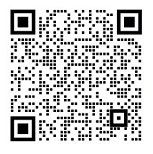1、 What does mobile communication mean? Mobile communication in English refers to communication between mobile entities or between mobile entities and fixed entities. Mobile objects can be people, as well as objects such as cars, trains, ships, radios, etc. in a moving state. Mobile communication is a modern technology for wireless communication, which is one of the important achievements in the development of electronic computers and mobile internet. After the development of the first, second, third, and fourth generation technologies, mobile communication technology has entered the era of fifth generation development (5G mobile communication technology). In the past half century, the development of mobile communication has had a profound impact on people's lives, production, work, entertainment, and even politics, economy, and culture. 30 years ago, the fantasies of drones, smart homes, online videos, and online shopping have all been realized.
2、 What is the principle of mobile communication? Mobile communication can achieve long-distance communication, and what is the principle behind it? Mobile communication uses smart devices such as mobile phones as mobile communication devices. When communicating, it is necessary to first establish a connection with nearby base stations, and then connect to the core network to find the communication destination. In the above process, all information is carried and transmitted through electromagnetic waves. The electromagnetic wave frequency band used by a mobile phone is related to the format and operator of the phone. But overall, the electromagnetic wave frequency band used by telecom operators is generally distributed in the range of 850-4900MHz. 3、 What are the characteristics of mobile communication? 1. Mobility requires maintaining the communication of objects in a moving state, so mobile communication must be wireless communication, or a combination of wireless communication and wired communication. 2. The propagation conditions of radio waves are complex. Mobile objects may move in various environments, and electromagnetic waves may generate phenomena such as reflection, refraction, diffraction, Doppler effect, etc. during propagation, resulting in multipath interference, signal propagation delay, and broadening effects. 3. Noise and interference are severe in urban environments, such as car spark noise, various industrial noise, intermodulation interference between mobile users, adjacent channel interference, and co frequency interference. 4. The complex system and network structure of mobile communication is a multi user communication system and network, which must ensure that users do not interfere with each other and can work in a coordinated and consistent manner. In addition, the mobile communication system should also be interconnected with local telephone networks, satellite communication networks, data networks, etc., and the entire network structure is very complex. 5. High frequency band utilization and good device performance are essential for better mobile communication.
-
Phone
4001-817-431 -
Wechat



